|
THE CARTRIDGE COLLECTOR'S EXCHANGE |
|
Home of the Old Ammo Guy's Virtual
Cartridge Trading Table
Picture Page October 2016 Please note: Unless otherwise indicated, the pictures on this web site are my property, and should not be used by anyone without my permission. The Cartridges of the 19th Century European Big-Bore Revolvers
PART 5: 10.6m/m Spanish Revolver Smith & Wesson Model 3 Revolver
In the early 1870s, Spain entered into a contract with Smith & Wesson to produce their Russian Model 3 revolver for them. This was a single action, top break, six shot revolver chambered for the .44 (10.6mm) Russian cartridge. The Spanish government didn't actually issue these revolvers as the standard military side arm, but instead recommended that the revolvers be purchased and carried. In 1884, Spain issued a decree stating that any product not patented in Spain would not be given copyright protection in their country, after which the contract with Smith & Wesson was cancelled and awarded to firearms makers in Eibar, Spain and elsewhere. These gunmakers manufactured copies of the No 3 revolver, but because there was little standardization in the parts they used, the guns they made often differed significantly from the original Smith & Wesson revolvers.
Spanish Model 1884 ONA Revolver
In 1884, following the Spanish decree that lead to the cancellation of the Smith & Wesson contract, the Orbea Hermanos Model 1884 System ONA revolver became the government recommended side arm of the Spanish Army from 1884 until 1903. Apparently, 'ONA' is Basque for 'good'. Also referred to as the Spanish S&W Model 7, it was a top break, six shot revolver with a shorter barrel, and was chambered for the 10.6mm cartridge. Unlike the Smith & Wesson Model 3, it was a double action, and most likely incorporated improvements based on other S&W-designed revolvers. . ..
Pictured here is a full box of 25 cartridges made at by Pirotecnia Militar de Sevilla in Spain. As indicated on the label, these are Model 1915 (?) cartridges intended for use in the Model 1884 revolver. The label also indicates the cartridges were made and packaged during October of 1918, with the bottom line providing the information regarding the powder charge. . . .
Dimensions for the cartridges in the box are shown below. I was surprised to find that the rims, case lengths, and overall lengths of the cartridges varied so significantly: .429 - .434" Bullet .438 - .440" Neck .454" Base .503 - .519" Rim .935 - .978" Case length 1.363 - 1.435" Overall length . . Sources: Pictures of the Smith & Wesson Model 3 Russian revolver and Spanish Model 1884 ONA revolver, as well as general information - Arma des las Islas Filipinas, Dedicated to the Historical Weapons used in the Phillippine Islands, http://armasdefilipinas.blogspot.com/2011/07/smith-wesson-1870-model-3-revolver.html http://armasdefilipinas.blogspot.com/2011/07/spanish-smith-wesson-m1884-ona-revolver.html
Other general information from Wikipedia - The Smith & Wesson No 3 -https://en.wikipedia.org/wiki/Smith_%26_Wesson_Model_3
|

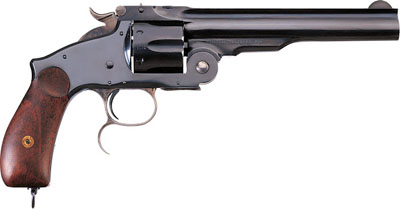
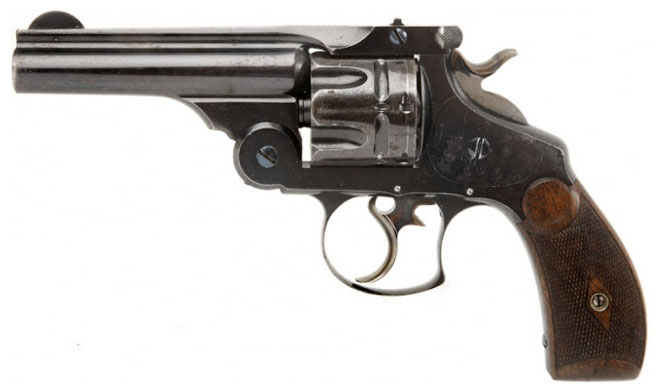
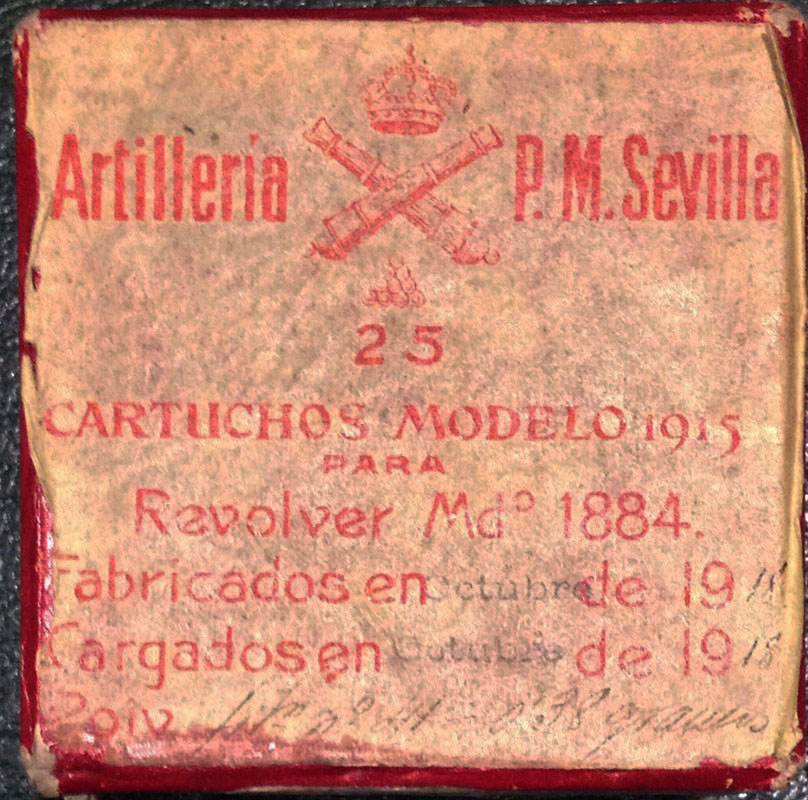
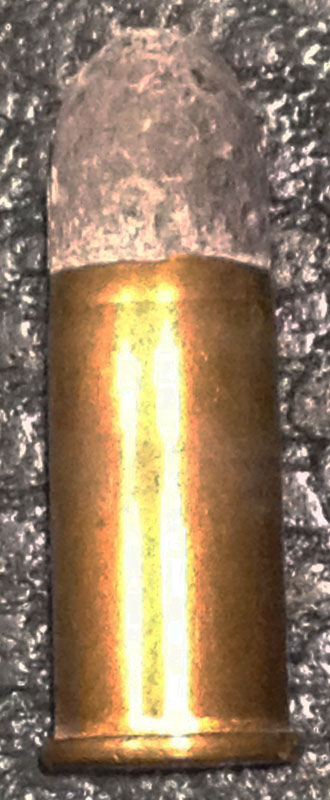 The cartridges in the box are shown in these two photos;
they have round nose lead
bullets, solid heads, copper-
The cartridges in the box are shown in these two photos;
they have round nose lead
bullets, solid heads, copper-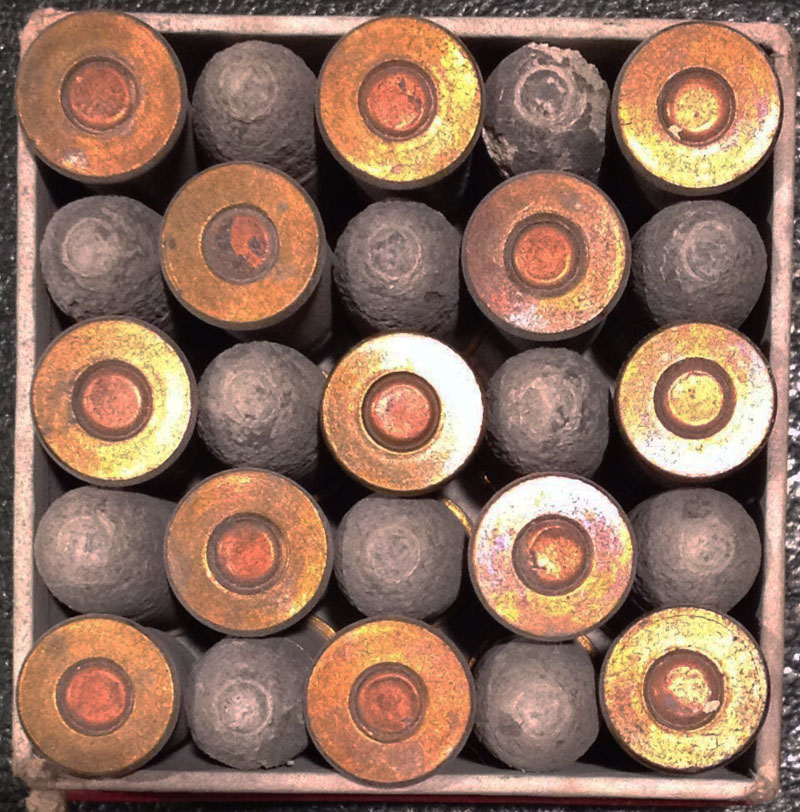 colored primers, and are unheadstamped. I have no other examples of
the 10.6mm Spanish cartridges in my collection that I am aware of, but I do
have quite a few unheadstamped cartridges that I have identified as .44
Russian that very well could be Spanish-made. I don't know if there were earlier
folded head, headstamped examples which may have included the maker's
marking and production dates in their headstamps.
colored primers, and are unheadstamped. I have no other examples of
the 10.6mm Spanish cartridges in my collection that I am aware of, but I do
have quite a few unheadstamped cartridges that I have identified as .44
Russian that very well could be Spanish-made. I don't know if there were earlier
folded head, headstamped examples which may have included the maker's
marking and production dates in their headstamps.